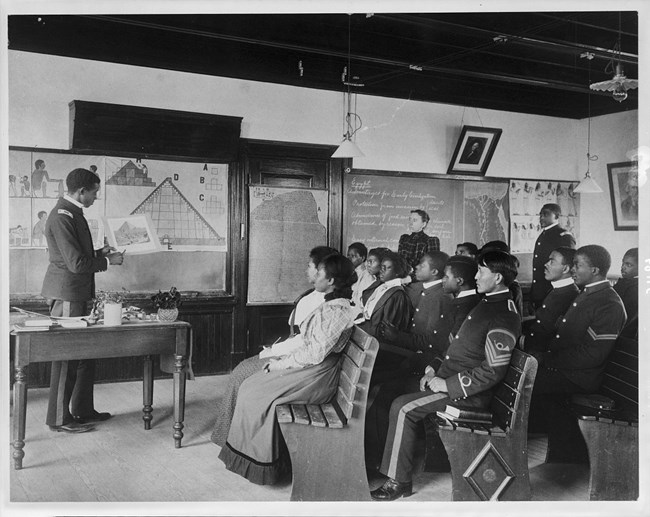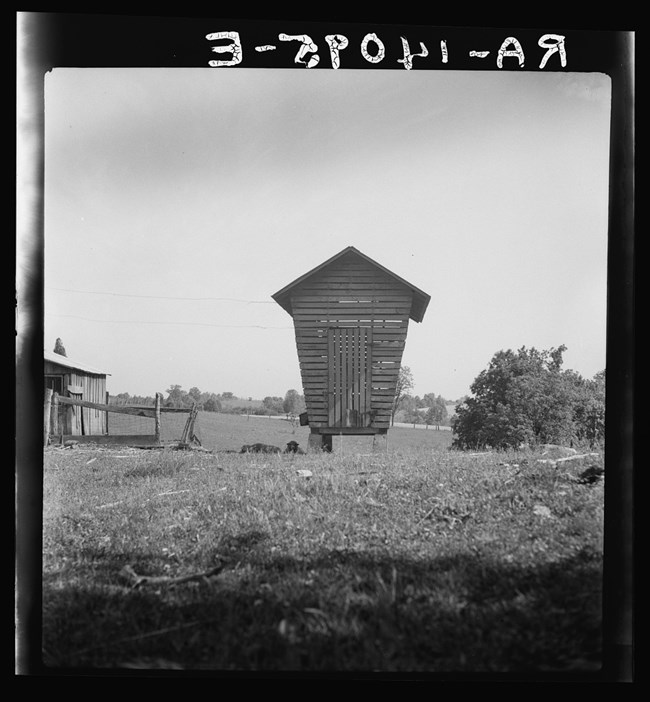Part of a series of articles titled Selections from Historic Contact: Early Relations Between Indian People and Colonists in Northeastern North America, 1524-1783.
Article
Understanding Northeastern Contact Part VI

https://www.loc.gov/item/2001703810/
Selections from the National Historic Landmark Theme Study
By: Robert S. Grumet, National Park Service, 1992
Understanding Northeastern Contact Part VI
Modern studies of the period no longer solely concentrate on settlers…. Writers of early American history traditionally portrayed Indian people as bit players in the colonial drama. No longer satisfied with this view, growing numbers of people are laboring to construct a different picture of events. … The more influential of these studies… are moving Indians from the periphery of contact of center stage. By depicting Indians as active participants in contact rather than passive victims inexorably caught in irresistible historical processes, these and similar studies are transforming our views of the American past. ….
No matter who they study or how they interpret their findings, scholars interested in contact increasingly are adopting interdisciplinary perspectives. Using a wide range of evidence, they are showing how Indian people struggled to maintain traditional ways of life as they found themselves progressively enmeshed within the emerging World-System. Much of this research is documenting Indian involvement in the region’s growing cash economy as hunters, traders, guides, soldiers, herbalists, laborers, servants, millworkers, whalers, and artisans. Other studies are showing how Indian people produced wampum and other traditional manufactures for new commercial markets or peddled homemade splint baskets, straw brooms, beadwork, and other handicrafts modelled after European prototypes to settlers and each other. Existing records show that not all Indian labor was free. Indian people falling into debt often were forced into indentured servitude. Others apprenticed themselves to colonial masters. Both natives and newcomers often enslaved prisoners.

https://www.loc.gov/item/2017765231/
Perhaps the most striking finding to emerge from recent studies is the growing awareness that the circumstances of contact compelled both native people and newcomers to deal with one another as members of sovereign independent nations. On the face of it, this would seem to be an obvious fact. To Indian people long accustomed to coping with strangers, Europeans and Africans must have simply seemed to be other foreigners. Europeans formally refused to recognize the legitimacy of Indian governments. Colonists depending upon Indians for success or survival, on the other hand, often adopted more pragmatic attitudes. Acknowledging the realities of contact, colonial authorities everywhere dealt with powerful native nations as sovereign states throughout the colonial era.
Much contact scholarship reflects the European tendency to regard tribal people as passive reactors to dominant or domineering European invaders. That this is so should not be surprising; colonial conquest cant invariably characterizes Indians as subservient subject people. Actual relations between Indians and settlers in the Northeast were far more subtle and complex. Most Coastal Algonquian groups forced to submit to colonial authority by 1700, for example, found ways around colonists’ intent upon dominating their lives. People from unconquered communities, like those Iroquois belonging to the Anglo-Indian Covenant Chain alliance, rigorously pursued their own interests as independent and autonomous nations while perfunctorily pledging fealty to foreign sovereigns thousands of miles away.
Many Indian people continued to conduct relations with the new American government as sovereign powers after 1763. Federal authorities acceded to this state of affairs by according constitutionally-guaranteed special status to federally acknowledged Indian tribes. Today, the federal government maintains a government-to-government relationship with more than 100 Indian tribes. Although many aspects of this relationship’s form and tenor have changed since the young American nation began to assert exclusive jurisdiction over Indian lands, people, and property, its constitutional basis has not changed over the course of the past two hundred years…. Although it has changed considerably in its particulars, contact continues between Indians and other Americans to the present day.
Last updated: June 3, 2019
